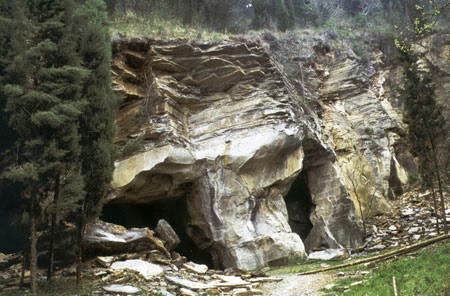It's rare that any lecture fails to spark a meteor shower of ideas but just occasionally I'm caught off guard. The LSE arranged an event to explore philosophical issues about art, and ask whether computer artworks are physical objects? Do they really qualify as art? The speaker Margaret Boden is Research Professor of Cognitive Science at the University of Sussex. I'd never seriously considered the more intellectual arguments about what constitutes 'art' and it also fitted in well with one of the German sessions of the Dresden conference which had focused on modern examples of mirabilia. I obviously hadn't written up that session so felt this was a good opportunity to synchronise some images and notes.
It's a good job I had some mental images of computer art because Boden provided no slides; 'she isn't into technology'. Was it wrong that alarm bells immediately started ringing? I don't paint with oils but I know how they feel, smell, am aware of their texture and understand their material 'paintiness'. I am no computer programmer but have a reasonable understanding of the architecture which sits behind the screen. My knowledge of marquetry is restricted to memories of my father and his woodwork, as well as reading how to guides, so I know about grain, colour, texture, symbolism. Historians of art require insight into the materiality of the objects they are studying, otherwise how do you understand the challenges that face the artist? It is telling that despite my linguistic incapabilities, I gleaned far more from Verena Kuni's visual presentation than Margaret Boden's words - pretty much the way when dealing with art!
A blog to explore the interests of an original renaissance woman; arts, sciences, poetry, librarianship and everything in between.
Showing posts with label materials. Show all posts
Showing posts with label materials. Show all posts
Thursday, 5 February 2015
Saturday, 18 January 2014
What is Sculpture Made Of?
 |
| Cava del Braschi, Monte Ceceri |
Sculpture is what it is we do when we take a memory of people. It goes to the heart and into the very notion of humanity.
We quickly dispatched painting and slammed the door firmly in its face. Painting can be anything but sculpture is better. Materials are as varied as the sculpture they make. Painting tells us a lot but the material of sculpture tells us more. At this point we could have concluded the lecture. But as he says, we would have been rather disappointed. I think what we needed was to be in a quarried amphitheatre, sat amongst the elements of sculpture.
Subscribe to:
Comments (Atom)
